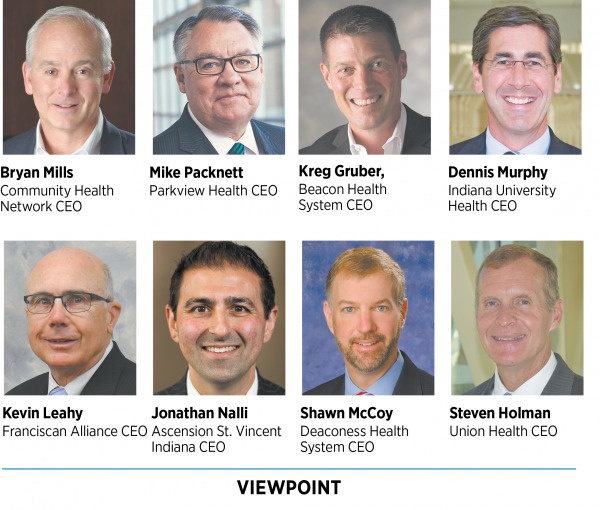
Indiana's health care heroes stood at the bedside of those battling COVID-19 for the last two years. As we emerge from the pandemic, hospitals continue to stand with Hoosiers, united in our commitment to high-quality care and affordability.
COVID-19 caused significant challenges for hospitals across the state, including staffing shortages, increased costs of supplies and medical equipment, ICU capacity issues, and the suspension of elective procedures. While cases have dropped significantly, our inpatient beds remain full as hospitals continue to care for more critically ill patients than ever before.
At the same time, we continue to experience external pressures such as skyrocketing costs for travel nurses and rising drug prices, in which Americans pay on average more than four times more than any other country. We also see that health insurance premiums are increasing at a pace greater than the associated medical spend.
Despite the unprecedented strain of the pandemic, we have implemented new tools that provide an unprecedented level of price transparency. In fact, Indiana's hospitals recently were ranked fourth highest in the nation for making hospital prices available to the public. Our audited financial statements are posted with the Indiana State Department of Health, and Hoosiers can search online to get estimates of services available at every facility.
This new era of transparency has fueled rapid change in the marketplace, and lower costs will come from the fundamental change in the way health care is delivered in Indiana. Hospitals and health systems are implementing new care models by contracting directly with employers, cutting millions from their health care expenditures while improving outcomes. Some have announced price-reduction plans that will save Hoosiers billions over the next five years. And we are continually investing in community health initiatives to tackle Indiana's poor health metrics, which increase health care costs for all.
In just a few weeks, an “updated" report from the RAND Corp. will be released that compares health care prices to government payments for Medicare. Regardless of where Indiana ranks, these recent changes will not be reflected in the study as the data is typically more than two years old when released. Addressing affordability is urgent, and we are acting now. Much has been accomplished, but there is more work to do.
Any employer knows that reducing the use of more expensive services and preventing costs “upstream" is the best way to control expenses. In our state, innovative models such as hospital centers of excellence are contracting with employers for “bundled" services such as orthopedics, and school systems are bypassing insurance companies to partner directly with hospitals, cutting administrative waste from the system.
Yet another example of market solutions are tiered and narrow networks established to control costs, like those Purdue University and the state of Indiana are implementing with local hospitals. Benefit design, wellness initiatives and new contracting dynamics are essential to reducing long-term costs and improving outcomes.
Further, reducing our health care spending cannot be achieved without improving the health of Hoosiers. Indiana ranks 41st worst in the nation in overall health, yet our state's public health spending is just $76 per person when the national average is $116 per person. Indiana's hospital systems stand committed to value-based reimbursement models to keep Hoosiers healthy, and together we provide a collective $7.2 billion in community benefit across the state.
Despite all the transparency and affordability measures now in effect for hospitals, it is evident that Hoosiers still do not have a full view of where their health care dollars go. Moreover, the calculation of health insurance premiums is still a “black box" for policyholders.
Without shedding an equal amount of light on every corner of the industries that play a role in health care costs, Hoosiers will always fall victim to cost shifting as the proverbial balloon gets squeezed. Giving businesses insight into how their premiums are set by insurance companies or how drug prices are set by pharmacy benefit managers is vital to building upon the momentum Indiana has created by being a leader in transparency.
The market is working, and we should let it continue in the most consumer- and business-friendly manner possible. Government interventions, such as statutory price setting, will not accomplish this goal. Only true transparency—capturing data across the entire health care industry—will help drive down overall health care costs in a sustainable, long-term manner.
Just as we demonstrated during the pandemic, hospitals stand committed to doing our part to make health care more affordable for Hoosiers.
Authored by:
Bryan Mills, President & CEO, Community Health Network
Mike Packnett, CEO, Parkview Health
Kreg Gruber, CEO, Beacon Health System
Dennis Murphy, President & CEO, Indiana University Health
Kevin Leahy, President & CEO, Franciscan Alliance
Jonathan Nalli, Ministry Market Executive, Ascension St. Vincent
Shawn McCoy, CEO, Deaconess Health System
Steven Holman, President & CEO, Union Health
Included photo from the published op-ed by Indianapolis Business Journal.
